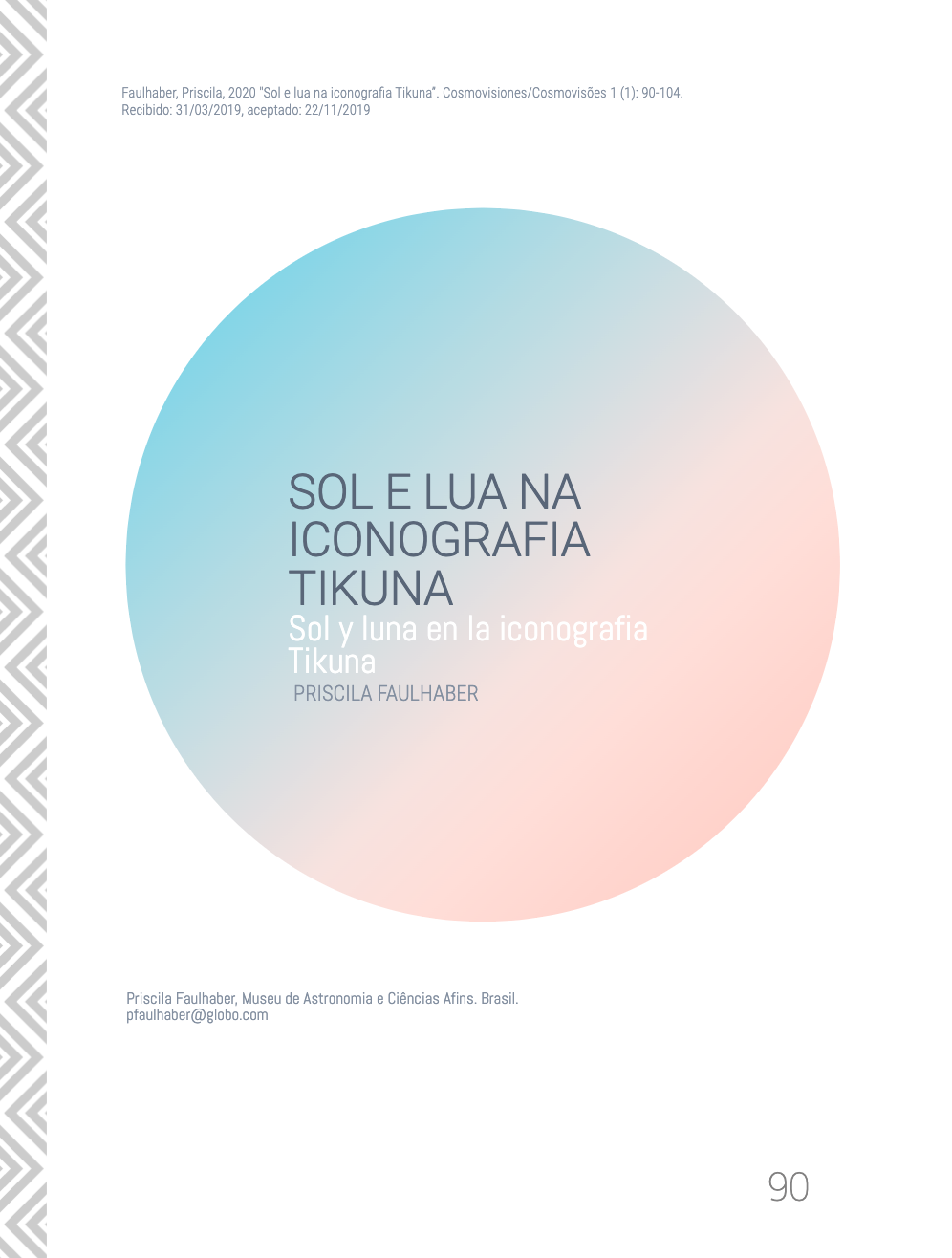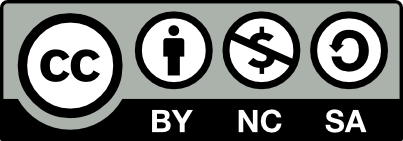Sun and moon in Tikuna iconography
Keywords:
Asterisms, stars, narratives, Tikuna, dynamics, conflictsAbstract
Based on Tikuna testimonies in Brazilian and Colombian communities, I analyze the relationship between celestial bodies in depictions drawn by those Indians, whose understanding is correlated to narratives associated to ritual practices. The anthropological examination of the testimonies resides in the interpretation of this type of iconography based on the evidence that they accomplish systematic observation of the sky based on their conceptions about sky-earth relationships. The contribution of these analyses for the Cultural Astronomy consists in the fact that this people that is still alive present enunciations referring to astronomical phenomena according to cultural variables articulate to current social relationships. According to these narratives expressed in the Tikuna iconography, the stars have already had earthly existence and their ascension to the skies usually evocates previous events that defined the provenance of the people, the kinship social organization, determined functions and feminine and male characteristics and the obligation of obeying certain ritual prescription during the Young Girl’s Festival. [...]
Downloads
References
BRODA, Johanna 1982 “Astronomy, Cosmovisión, and Ideology in Pre-Hispanic Mesoamerica” Annals of the New York Academy of Sciences Volume 385, Ethnoastronomy and Archaeoastronomy in the American Tropics pages 81–110, May.
BRODA, Johanna 2001 “Astronomía y paisaje ritual: el calendario de horizonte de Zacatepetl-Cuicuilco.”In Broda, Johanna, Stanislaw Iwaniszewski y Arturo Montero (coords.): La montaña en el paisaje ritual (Estudios arqueológicos, etnohistóricos y etnográficos): 173-199. ENAH-Instituto de Investigaciones Históricas, UNAM, -Universidad Autónoma de Puebla, México.
BRODA, Johanna 2004 La percepción de la latitud geográfica y el estudio del calendário mesoamericano. In: Estudios de Cultura Náhuatl. Vol 35, pp. 15-43.
CAMACHO, Hugo 1995 Magüta, La Gente Pescada por Yoi, Bogotá, Colcoltura.
FAULHABER, Priscila 2006.“Iconography, Myths and symbolism inscribed in ritual artifacts: The Tikuna collection in a comparative perspective”. Berlim, Baessler Archiv, 54, p. 95-118.
FAULHABER, Priscila 2017 Leitura interpretativa sobre relações céu-terra entre os índios Tikuna. In: FAULHABER, Priscila.; LOPEZ, Alejandro.; ATHIAS, Renato. (Orgs.). Dossiê sobre Antropologia e Astronomia Cultural. Recife, Anthropológicas, Ano 21, volume 28 (1), Junho, pp 73-104.
FRANCHETTO, Bruna e D´Olne Campos, Márcio. 1987 Kuikuru: Integración Cielo y Tierra en la Economía y en el Ritual. In: GREIFF, Jorge Arias de y REICHEL Von HILDEBRAND, Elizabeth (Comp.) Etnoastronomías Americanas. Bogotá, Universidad Nacional de Colombia, pp 255-271.
INGOLD, Tim 2011 Being. Alive Essays on movement, knowledge and description. New York, Routledge.
NIMUENDAJÚ, Curt. 1952. The Tukuna. Publications in American Archaeology and Ethnology, vol. XLV (org: Robert Lowie). Berkeley and Los Angeles: University of California Press, 1-167.
REICHEL-DOLMATOFF, G. 1978 Beyond the Milky Way. Hallucinatory Imagery of the Tukano Indians. Los Angeles, University of California.
SEVERI, Carlo 2015 The Chimera Principle. An Anthropology of Memory and Imagination. Chicago, the University of Chicago Press.
SEVERI, Carlo e LAGROU, Els 2013. Quimeras em Diálogo. Grafismos e figuração na arte indígena. Rio, 7 Letras.
WILBERT, Johannes 1981 Warao Cosmology and Yekuana Roundhouse Symbolism. Journal of Latin American Lore 7(1):37–72.

Downloads
Published
How to Cite
Issue
Section
License
Authors who publish in this journal agree to the following terms:
The authors retain intellectual authorship of the work and guarantee the journal the right to be the first publication of the work.
Authors may share the work with acknowledgment of authorship and the initial publication in this journal.
Authors may separately establish additional agreements for the non-exclusive distribution of the version of the work published in the journal (for example, placing it in an institutional repository or publishing it in a book), with an acknowledgment of its initial publication in this journal.
The journal offers free access ("open access") to all its content. The articles are available to be read, downloaded, copied, printed and/or researched according to the Creative Commons license: CC BY-NC-SA (Attribution - Non-Commercial - Share Alike-4.0 International)

The content of the journal is fully available from its publication. Readers are required to correctly cite the journal and the author of the downloaded content















